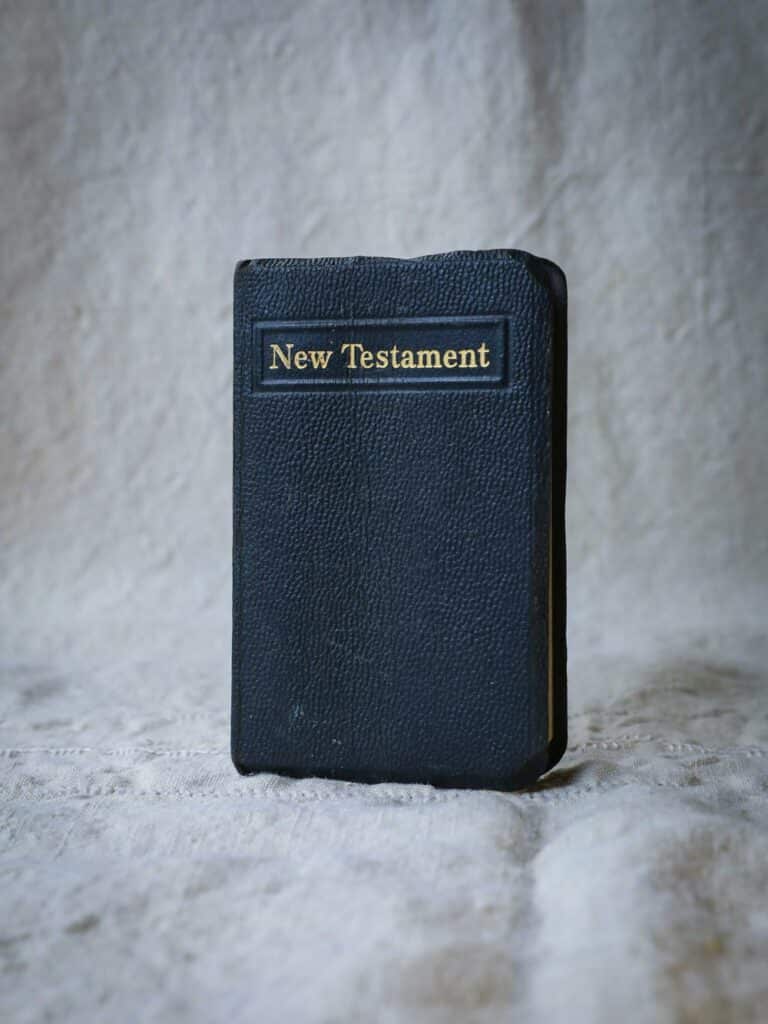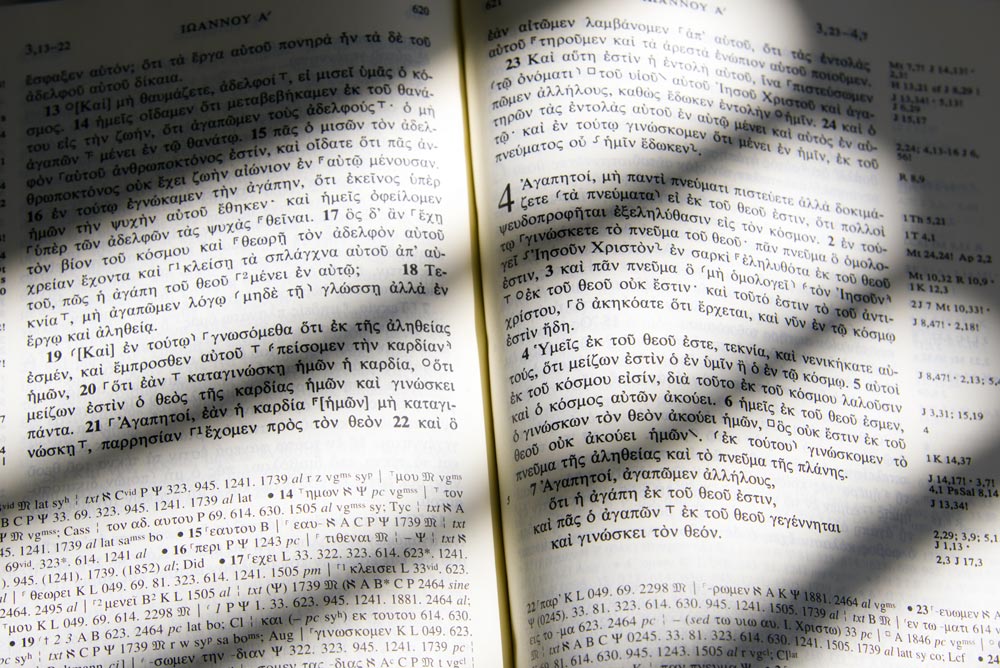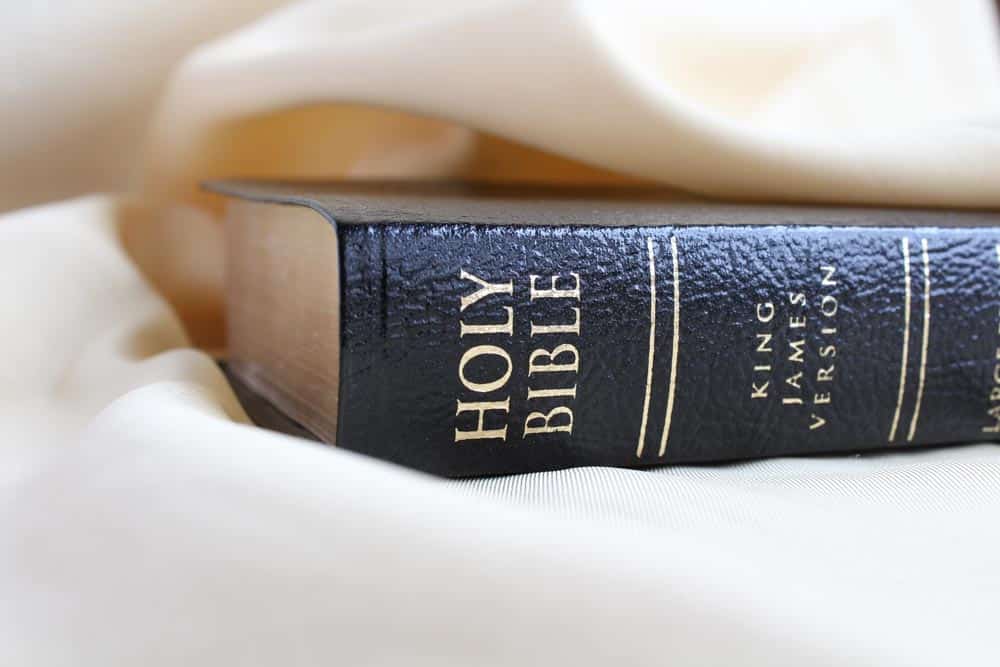Copying New Testament Manuscripts
The 27 books of the New Testament were written between AD 50 and 95. These Scriptures, clearly a new gospel story about Jesus, were translated by Christian scribes or monks who worked in monasteries, although some important work was also done by individuals working alone.
In our article on Old Testament translation, we described the painstaking protocol followed by Jewish scribes translating the Hebrew scriptures and we have no reason to believe that the New Testament transcription was any less stringent.
What happens, however, if a copying error makes its way into the copying process and isn’t noticed? Because we don’t have the original biblical writings, how do we uncover such errors?

A Wealth Of NewTestament Material Available
Fortunately, for the New Testament we literally have tens of thousands of pieces of information to work with in compiling an accurate replica of the originals. We have pieces of papyrus and scrolls, over 5,000 Greek manuscripts, various translations in different languages (e.g., over 10,000 Latin manuscripts), and quotations from early church fathers who quoted from the originals. If we were to lose all this manuscript evidence, we could still recreate the entire New Testament from the over one million quotations in the writings of the early church fathers.
This vast amount of material is carefully analyzed and compared—via a process called textual criticism—in order to compile a modern Bible edition. Because we have so much material to work with, we are able to see where potential copying errors occurred.
Potential Errors Noted
English readers who own a Bible with footnotes can track where many of these potential errors occur. The English Standard Version, for example, has footnotes at Matthew 6:13, 12:47 and 16:2-3 that tell readers there is some discrepancy between manuscript evidence. Early manuscripts vary enough that modern translators must make choices as to which one most faithfully reflected the original writings by Matthew.
As a matter of fact, this is the crux of the debate about whether the King James Version is the only “authorized” version believers should use, since modern versions appear to “delete” verses that are included in the King James Bible. These differences, however, arise from conflicting manuscript evidence and not a deliberate cutting out of Bible verses. Interested readers can consult our article on the “King James Only” debate.
Let’s look at an example of textual criticism from two Greek manuscripts.

Two Minor Greek Manuscripts
Codex Petropolitanus Purpureus is a 5th-century Greek manuscript that has portions of the four Gospels. What remain are 231 parchment folios (leaves or pages) of what was estimated to be 463 leaves, written in two columns each with 16 lines and only 12 letters in each line. Believed to have originated in Constantinople, the manuscript was possibly damaged by European crusaders in the 12th century. The 231 extant leaves are currently kept in nine libraries around the world including Russia, Greece, Vienna, and the Vatican.
Codex Bezae Cantabrigiensis is a 5th-century manuscript originating from either France or Southern Italy that has one column in Greek with another side-by-side in Latin. Its 406 surviving leaves (of an estimated 534) contain most of the Gospels, Acts, and a small bit of 3 John. It is currently kept at Cambridge University.
If all we had were these two early manuscripts, we could compare them to each other and attempt to discern what the original Gospel of Matthew, for example, said. But which manuscript is more trustworthy, and how do we decide which is correct when the two disagree?
This involves an incredible amount of detailed debate. Fortunately these aren’t the only two New Testament Greek manuscripts available to us today. Because we have thousands of pieces of evidence for the Gospels, scholars are able to build a credible argument for why the Gospel of Matthew found in Codex Bezae Cantabrigiensis is more accurate than the one found in Codex Petropolitanus Purpureus.
Which brings us to the next important issue.
Which Manuscript Stream Is Most Reliable?
Greek manuscripts of the New Testament are categorized into three groups: Alexandrian, Western, and Byzantine. Alexandria, Egypt, was an ancient center for academic excellence and scholarship. Scholars view Alexandrian manuscripts as the best copied and most accurate. Western manuscripts come from a much wider area that extends from North Africa to France and east to Syria. These manuscripts appear to have less oversight over the copying process when compared with Alexandrian manuscripts.
The third category is Byzantine, coming from Constantinople. While 80% of all existing Greek manuscripts are in this category (this is why the Byzantine manuscripts are called the Majority Text), Byzantine manuscripts are considered the least accurate as there is evidence of expanding or smoothing out passages by copyists. The New Testament in the King James Version comes from this class of manuscripts.
Textus Receptus
In 1516, Dutch scholar Erasmus of Rotterdam (1466-1536) published the first complete Greek New Testament, Novem Instrumentum omne, a century later dubbed the Textus Receptus, working mainly from Byzantine manuscripts. He used 12th and 13th century Greek manuscripts of the New Testament that were housed in various Catholic locations, such as a Franciscan monastery in Cambridge, England, and a library in Basel, Switzerland, plus some manuscripts since lost.
Erasmus himself noted that there were errors in his translation. No less than four times he edited his own work, in 1519, 1522, 1527, and 1535. Tyndale’s English Bible (1526) and Luther’s German New Testament (1522) relied on earlier editions of Erasmus’ work.
French scholar Robert Estienne, known as Stephanus (1503-1559), edited Erasmus’ work four times, the last in 1551. This was followed by French theologian Theodore Beza (1519-1605) who updated the work nine times between 1565 and 1604. Beza was the successor of John Calvin as the leader of the influential Reformed community in Geneva.
The King James Translation
By the time the King James translators got to work on their new Bible version, the Textus Receptus had gone through over a dozen extensive edits and corrections. They relied on Beza’s work but not exclusively, nor did they always agree with it. There are roughly 200 places in the New Testament where the King James translators parted ways with Beza’s rendering, instead relying on earlier editions of the Textus Receptus. They also relied on earlier English translations, the third edition of the Bishop’s Bible (1602) being the foundational English version from which they worked.
While the King James Version relied on manuscripts from the Majority Text (Byzantine) for its New Testament translation, modern Bible translations use a more eclectic approach, although they predominantly rely upon the Alexandrian type of Greek manuscripts. In fact, other Greek manuscripts have been discovered since the KJV translation. It’s helpful to note, however, that there is 95-98% agreement between the Majority Text used by the KJV and modern critical Greek texts that might be used by other translations.
Let’s briefly look at four of the most important Greek manuscripts that are used to translate the majority of modern Bible versions.
The Four Great Codices
Sometime during the 4th and 5th centuries, the “four great codices” were produced—Codex Vaticanus, Codex Sinaiticus, Codex Alexandrinus, and Codex Ephraemi—which serve as the oldest existing manuscripts to contain the entire Bible. All four codices (a codex is just another way of saying book, as opposed to scroll) are written in a similar style and are thus categorized together. But not all of these manuscripts were available to scholars producing English Bible translations.
Codex Sinaiticus
For example, Codex Sinaiticus was only discovered in 1844 by German scholar Constantin von Tischendorf in the library of the Eastern Orthodox Saint Catherine’s Monastery on the Sinai Peninsula. While Sinaiticus has the oldest complete Greek New Testament of any existing manuscripts, its Old Testament is missing fragments from several books. Currently kept in the British Library, most believe it was produced in Rome around the mid-4th century. Internal evidence suggests that several scribes worked on the codex. Interestingly, given its large size, it is estimated that over 300 animals were used in the production of the parchment for this manuscript.
As our oldest Greek New Testament manuscript, Sinaiticus plays an important role in modern Bible translations. Obviously, it wasn’t available to Bible versions prior to 1844 like the King James Version.
Codex Vaticanus
Codex Vaticanus is also a 4th-century manuscript. It is named after its place of conservation, kept in the Vatican Library since at least the 15th century. Along with Sinaiticus, it is part of the Alexandrian family of manuscripts. Vaticanus is considered to be the oldest existing copy of the whole Bible, but even then some portions are missing from Genesis, Psalms, and Hebrews, and it completely lacks 1 and 2 Timothy, Titus, Philemon, and Revelation. Missing portions were supplemented by scribes in the 15th century using other manuscripts. Western scholars became aware of Vaticanus in the 16th century because of correspondence from Erasmus, but Erasmus didn’t use it to produce his Textus Receptus, and there are many places where the two differ.
Older Manuscripts Used For Newer Translations
Vaticanus and Sinaiticus stand as examples of the questions around Bible translations. Modern versions prefer these more recently-discovered manuscripts as the base for New Testament translations, given they are older and therefore more reliable than the Majority Text. In 1881, Westcott and Hort published The New Testament in the Original Greek, which relied predominantly on Sinaiticus and Vaticanus, marking a shift in biblical scholarship away from the Textus Receptus. Subsequent critical editions of the New Testament have followed in their footsteps.
In 1898, the first edition of the Nestle-Aland Greek New Testament (also known as Novum Testamentum Graece) did the same. Now in its 28th edition (2012), Nestle-Aland is the Greek text that all modern Bible translations are based upon, as most scholars prefer to use more recently discovered manuscripts.
Keep in mind, scholars still consult hundreds of pieces of evidence when creating their Bible translations, and as newer manuscript discoveries are made, they test long-held translation conclusions. There is simply more evidence to consider today than 400 years ago when the King James translators did their work.
Codexes Alexandrinus and Ephraemi
Codex Alexandrinus and Codex Ephraemi round out the four great codices, but aren’t as influential as Vaticanus and Sinaiticus. Both dated to the 5th century, Alexandrinus and Ephraemi are not solely classified as coming from the Alexandrian family of manuscripts but are considered mixed.
As its name suggests, Alexandrinus was kept in Alexandria, Egypt, until it was moved to Constantinople and subsequently given to Charles I of England. It is currently kept in the British Library. While it originally had the complete Bible, some of its pages are missing or damaged, including almost all of Matthew and 2 Corinthians.
Ephraemi, kept in the National Library of France, is most neglected. While containing almost all of the New Testament (2 Thessalonians and 2 John are missing; fragments of every other book also missing), it only has five portions of Old Testament books. Its origin is unknown. It has been available to Western scholars since the early 18th century.
What Does This Mean For The KJV?
What can we conclude when comparing the King James Version’s New Testament with modern Bible translations? While the King James New Testament is composed from the majority of ancient Greek manuscripts, modern Bible translations use older yet not as many manuscripts; because they are older they are deemed closer to the original. As noted earlier, however, this does not take integrity from the KJV. Keep in mind our earlier statistics, and remember the correspondence between the KJV manuscripts and more modern translations is 95-98%. But do these differences make a difference?

A Helpful Metaphor
As we’ve seen here, putting together a Bible translation is complex, and involves questions of small details that may not be perfectly answered. You may be asking: “What if my Bible is wrong? How can I trust it?”
Consider this example. Suppose you were asked to cross over a rope bridge with wood planks that spans a deep cavern, but you were told that some of the planks were rotting. Would you be willing to cross over the bridge? Probably not.
However, what if you were told that planks 3, 57, and 83 were potentially unsafe. Would you then be willing to walk across the bridge?
Can I Trust The Bible?
This is what we have with the Bible. We know that over 99% of it accurately reflects the original writings, but in the less than 1% that remains (actually, it is about a quarter of one percent), we are not entirely sure because the manuscript evidence is mixed. But we know where all these passages are, and none of them affects an important Christian doctrine or practice.
In other words, we know where all the potentially faulty planks are. All of these discrepancies are footnoted in most good translations of the Bible for readers to recognize.
So yes, we can trust the Bible.
“All scripture is given by inspiration of God, and is profitable for doctrine, for reproof, for correction, for instruction in righteousness:” II Timothy 3:16
If you’re interested in more about manuscripts, read this article about those used to translate the Old Testament. This article also briefly explains how the manuscript copying process worked, and why this is important for understanding the manuscript evidence used for translating the Bible.

